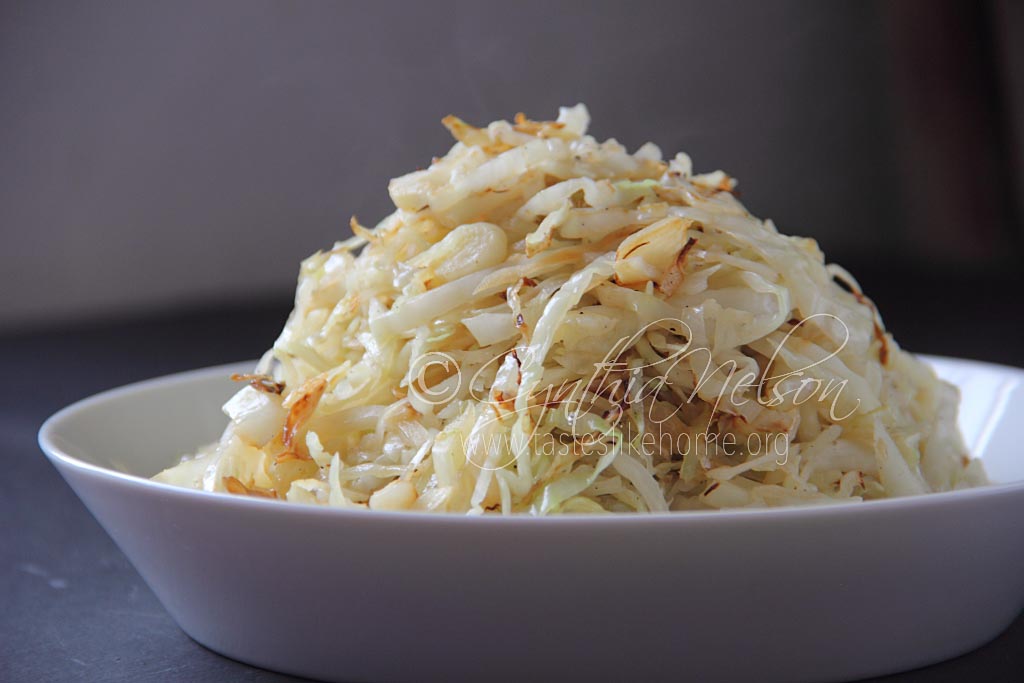
Whenever I am entertaining, I never serve a salad as the vegetable component of the meal. The main reason why is because people hardly eat the salad. Some people may take a little to garnish their plate, but let’s be honest, most are interested in the mains and sides. What’s been your experience? After having to constantly put away bowls of garden salad, I have sought to let the vegetables I serve be the side dishes, in the form of a stir fry, sauté or roasted. With this approach (except if they do not eat the vegetables on offer), people add helpings of the vegetables to their plate.
There are six vegetables from which I choose because of their ability to cook up quickly: callaloo (thick leaf), cabbage, pak choi (aka Chinese cabbage), bok choy, cauliflower and broccoli. These are vegetables that regardless of the preparation – sauté, stir fry or roast – I can cook as people are about to get ready to sit down, and serve hot. The cauliflower and broccoli are the two that most often would be treated to a roast, therefore, I’d time things in such a way that they’d be ready to come out of the oven just as we are about to sit down. Most of the time, I get asked how I managed to get the veggies cooked so quickly. And always, this question is prompted by the large water content of the veggies, which when cooked in a particular way, yield a lot of moisture that then takes time to evaporate and cook down.
When we are accustomed to cooking in certain ways, we forget or rarely consider applying different techniques to those same ingredients. Last week, when my friend Gillian came over for a pre-birthday meal, and I served sautéed cabbage as a side dish, she remarked that she’s only ever cooked cabbage steamed, in a stew or curry; or shredded it in a coleslaw. She enjoyed the cabbage and asked how to make it, so I told her.
After shredding the cabbage or cutting it into strips, separate the layers.
Get a shallow frying pan, like a skillet. I showed her the cast iron pan that I used. It’s best not to use a karahi in this case because its high thick sides will cause steam to accumulate and the cabbage will release moisture and stew.
Add a little oil to the pan and place it over high heat. Let it heat up until the pan is smoking hot. Swirl the oil around to coat the bottom of the pan.
Add the shredded cabbage to the pan spreading it out in an even layer. Let the cabbage cook without touching it for 2 full minutes. What you want to happen here is for the cabbage to develop bits of brown patches from being in direct contact with the pan – this is where flavour develops. Using kitchen tongs or 2 forks, toss it so that cabbage on top gets to cook at the bottom of the pan. Again, leave it for another 2 minutes. After this give the cabbage another toss mixing it together but always in an even layer.
When the cabbage wilts, relaxes and softens, it is done cooking. Season with salt and freshly ground black pepper, give a toss, shut off the heat and transfer to a serving dish. The entire process should take no more than 6 minutes.
Gillian was wide-eyed when she learnt that I only added salt and black pepper. She swore that I had added other seasonings to the cabbage because it tasted like there was some sauce that caramelised with the cabbage. We had a good laugh at that and I explained further that what she was tasting was the flavour developed by the cabbage browning/charring a little in the pan. Cabbage naturally has a bit of sweetness, so when heated on a hot cooking surface, its sugars will caramelise.
As you well know, various cooking materials render particular results when certain cooking techniques are added. Think aluminium versus stainless steel versus non-stick, versus cast iron (coated or uncoated). The searing and heat conduction differ. Therefore, consider the results you are going for and choose your cookware to suit. My non-stick frying pan would not have given the exact results I needed for the cabbage. It would have cooked but without any of the browning/char. And the pan would not have been consistently maintaining the high heat I needed.
Seasoning the cabbage at the end of the cooking process ensures that no moisture develops. And removing the pan immediately from the heat is a guarantee as well. It is the type of dish to cook and serve almost immediately. While I seasoned only with salt and black pepper, any dry seasoning with a salt base can work. The flavour profile is a personal choice. The cabbage with its cooked flavour was what I wanted, truly making the vegetable the star.
I spoke about this dish in the context of entertaining but when I prefer a no-carb meal, I would cook this or any of the other veggies I mentioned at the top of the column to accompany roast or baked meats or poultry.
Cynthia
cynthia@tasteslikehome.org




